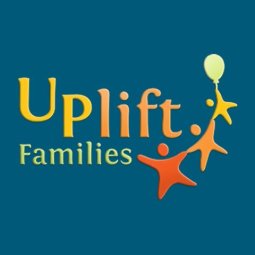A coalition is formed when a group of people from diverse backgrounds unite and work toward achieving a common goal. Usually these people have a personal investment or reason for being a part of the coalition, which creates greater passion and excitement to see that the goal or goals are achieved. These groups can be varied and diverse, and each member brings their own special skills, talents and enthusiasm which enriches the entire experience.
Across our great state, prevention coalitions are active in their communities reducing risk and strengthening protective factors many Utahns already strive to live by such as family bonding, healthy lifestyles and strong moral values. We know that when we go upstream to solve problems that would lead a child to engage in underage drinking and drug use, we are literally securing a better future for everyone. Implementation of evidence-based prevention practices allow valuable resources to be retained and used more effectively. Taxpayer dollars earmarked for unemployment benefits, for juvenile and adult court costs, and for state welfare programs can be saved, all while we protect the most valuable resource of all; our youth.
Coalition coordinators follow evidence based frameworks to create the board of community members and a strategic plan to guide their efforts. These frameworks rely on a process that is familiar for many health professions and if followed is sure to bring intended results. Communities That Care is one model used by many coalitions in Utah. For more information please visit www.communitiesthatcare.net. Another popular model is called the Strategic Prevention Framework and you can read more about it here. Both processes are circular and not meant to be done only once. The main tasks are to assess needs and resources, assess capacity, plan, implement and evaluate.
Board members first ASSESS the problems in their community by gathering and analyzing data which could be found in student evaluation reports, information from the courts and emergency departments, law enforcement, parent surveys, etc. Once problems are identified the board will then seek out current resources that could address these problems and work to collaborate with the organization offering the resource.
The board will need to determine their own capability to deliver prevention practices. Is there enough money to pay for they program? Are there enough people to provide the service effectively? Do we have a place to offer it? How will we get the word out? These and other questions need to be answered to determine CAPACITY.
The next part of the process is to PLAN. Board members will create an action plan outlining measurable goals to implement the prevention practice, and how to reach the goals within a time frame.

Once the plan is in place, it’s time to jump into the real work- IMPLEMENTATION. This is where the program or practice is actually provided to the intended audience. For example, if one of the biggest problems your board discovered was kids lacking parental supervision after school because parents are working, perhaps a Boys and Girls Club could provide after school activities or mentoring for youth between the hours of 2:30 – 7 pm. Board members may even decide to volunteer to work with the youth at the center, offering classes, tutoring, and even meals.
The last step in this circle of prevention is EVALUATION. Now that the board has gone through the phases and prevention efforts have been underway, it is critical to review gathered data from the implemented program- pre and post tests surveys, for example, to determine if your efforts made an impact on your identified problem or risk factor. If the results are good, keep moving forward! If they lack reaching the goal you set, it’s time to begin again by assessing what is needed and how you can affect change.
Coalitions rely on the willingness and commitment of community members to keep it alive and growing. The coalition should have representation from many different sectors of the community, like law enforcement, business owners, PTA members, school faculty, parents, treatment providers, and youth themselves. These are a few examples of the types of representation coalitions should strive to recruit for membership.
If you are interested in getting involved in prevention in your area, please visit https://dsamh.utah.gov/services/prevention/learn-about-prevention-in-utah where you can contact the prevention coordinator in your area or click on the tab to get involved!
 Heather Lewis is the Substance Use Disorder Prevention Coordinator with the Utah County Health Department. She manages a team of prevention specialists who provide services, education, and training for the citizens of Utah County, and works with the school districts to provide prevention curriculum to youth.
Heather Lewis is the Substance Use Disorder Prevention Coordinator with the Utah County Health Department. She manages a team of prevention specialists who provide services, education, and training for the citizens of Utah County, and works with the school districts to provide prevention curriculum to youth.
To contact Heather Lewis, email at [email protected].

